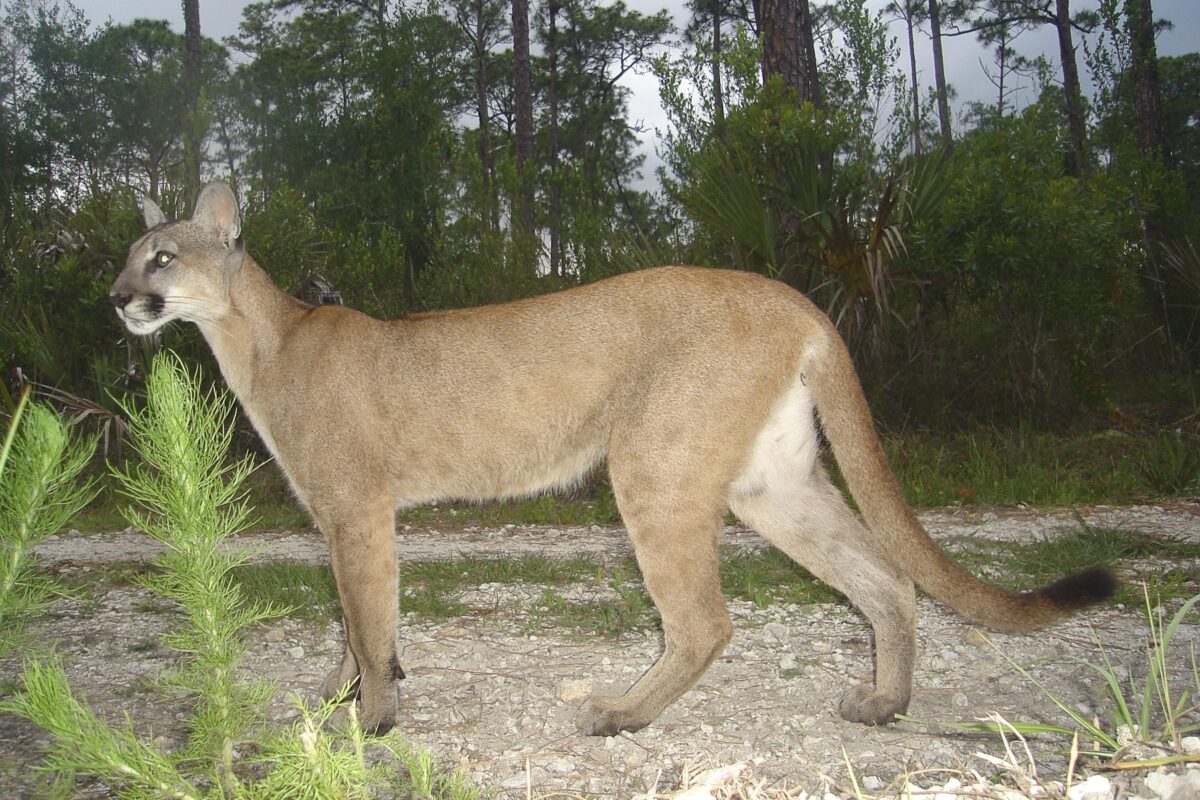An op-ed published in the Los Alamos Daily Post
By R. Brent Lyles, Sharon Negri and Julie Marshall
Sunday marks the first anniversary of the death of P-22, a most beloved mountain lion who lived among Angelenos in Griffith Park for more than a decade.
P-22 lived life large as a celebrity bachelor feline, although he probably didn’t care much about Hollywood glamour. He was photographically captured by National Geographic amid the starry night’s Hollywood sign.
This was a lion who brought stalwart wildlife biologists to tears when they talked about his life and legacy: The legend of P-22 continues to grow, and his spirit lives on in a documentary, public art installations, and an exhibit at the Natural History Museum of L.A. County, just to name a few. In fact, P-22 became famous well beyond his home state, and he’s still talked about with love and appreciation across the country and around the world.
The protections demanded by Angelenos for P-22 provide much-needed inspiration for those of us fighting to protect P-22’s extended family throughout the American West. Mountain lions are being treated with the most egregious disrespect and cruelty seen since the wildlife persecution era, more than a century ago. Angelenos accepted a mountain lion to live among them in a relatively small urban space, but wildlife policymakers in most Western states have become much less welcoming — in fact, many policymakers are brazenly hostile toward mountain lions naturally existing on vast wild landscapes across the West.
This year in Utah, lawmakers succeeded in calling for an all-out war on mountain lions, allowing them to be randomly killed as well as caught in snares, often just for fun, at any time of year. Utah’s entire population could be wiped out in just a few years, conservationists say. Similarly, Idaho opened the floodgates to increased recreational hunting with just two months of reprieve for apex carnivores, who will be increasingly chased down by packs of dogs. Hounding is allowed in nearly every state that allows this kind of ethically dubious hunting. It’s little different from shooting a mountain lion in a cage, since once the hounds chase a lion up a tree, the cat is helpless to escape being shot at close range and falling to his or her death.
Other states are simply choosing to disregard the best science of basic lion ecology, stick their heads in the proverbial sand and pretend that new and valuable research doesn’t exist. South Dakota is considering accepting a lowered population of lions on the landscape in exchange for more hunting opportunities, for little reason other than that it’s a fun activity for a minority of people who primarily want to collect trophies (a head and a hide). It’s fundamentally no different from trophy hunting the African lion.
Washington state recently increased lion hunting after elk populations were reduced by extreme weather and wildfire. Montana and Wyoming are similarly using declining mule deer as excuses to boost lion killing as recreation. Our best collective research has laid to rest the idea that less lions equals more ungulates. Nature is never a simple math equation, but rather a complex and biodiverse system where wildlife is impacted by weather, disease, development, drought, habitat loss and many other multiple factors that demand consideration, rather than scapegoating a single species.
In contrast, there is great hope in Colorado as citizens of that state are looking to follow in California’s footsteps by banning trophy hunting of its mountain lions (as well as trapping bobcats) with a 2024 ballot measure called Cats Aren’t Trophies (catsarenttrophies.org). And in Florida, federal officials proposed a large wildlife refuge to protect mountain lion habitat near the Everglades, and they are acquiring land to provide safe crossings from south Florida to Georgia. We need this hope, because today with the regressive policies and permissive exploitation of mountain lions across the West, we are not only failing morally, but we are causing great harm to whole ecosystems at a precarious time.
Today we know better, and we can do better. We know that mountain lions are sentient and shy, elusive creatures who would rather avoid humans altogether. New and exciting research shows us that lions provide unique ecological services as apex carnivores, benefiting at least 500 other species. Mountain lions are a key to climate resiliency and to stopping the biodiversity losses that are happening everywhere we look. Some research has even indicated that lions selectively target deer infected with chronic wasting disease (CWD), an insidious infection without a cure that is rapidly spreading across the country, ravaging deer populations, and threatening wildlife and potentially humans. CWD was even recently detected inside Yellowstone for the first time.
On Sunday we celebrate the remarkable life of one lion named P-22. His light still shines brightly in the memories of those of us who live in lion country and yearn for a future where mountain lions are protected, as he was. We envision a world where mountain lions are not villainized and killed for fun and under false pretense. It’s ironic that P-22 was so warmly welcomed into a world of neighborhoods and freeways, while others of his kind, trying to exist in their wild places, are being ruthlessly rooted out from their natural homes. In the name of P-22, we must keep fighting to end the cruel and unnecessary killing of lions for trophies, for the welfare of humanity and for the health of the planet.
R. Brent Lyles is Executive Director of the Mountain Lion Foundation, which is based in Sacramento, California. Sharon Negri is director of WildFutures and lives in Northern California. Julie Marshall is National Communications Coordinator for Animal Wellness Action and the Center for a Humane Economy, based in Washington DC, and lives in Colorado.



 Facebook
Facebook Twitter
Twitter Send Email
Send Email


